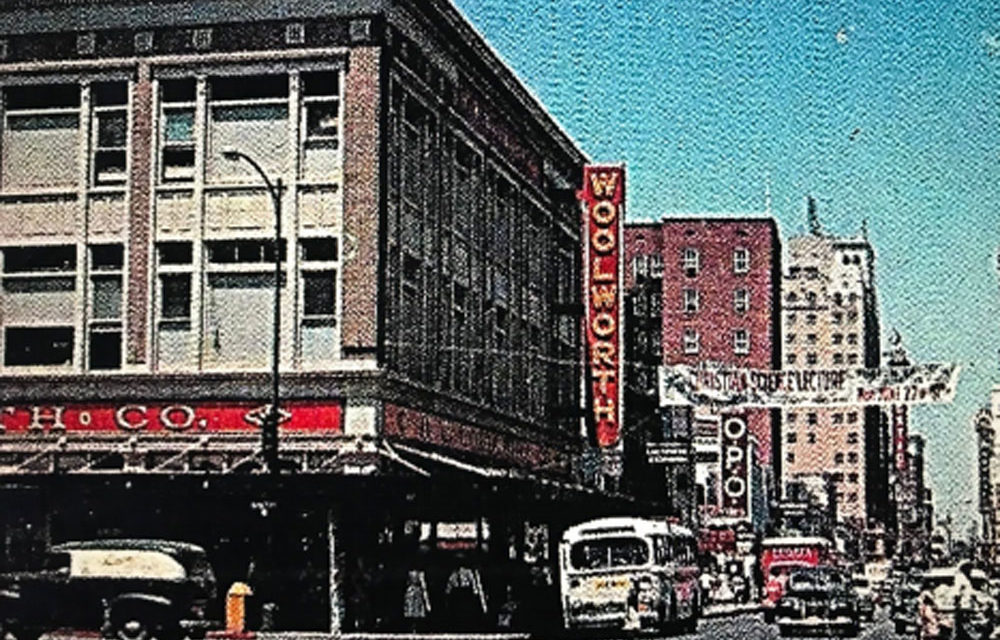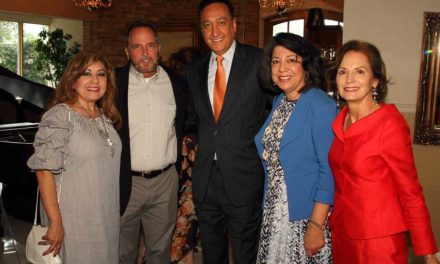Ritchie Valens singing La Bamba, Ford Mustangs and Chevy lowriders cruising on Commerce Street, sitting in our cars at Rogers’ Drive Inn eating burgers and fries, and going to high school football “Chili Bowl” games [Tech vs. Lanier] at the Alamo Stadium. These memories, as well as the musical rise of the Beatles and a remarkable moon landing, are a few of my treasured thoughts of the great sixties era. And the sixties certainly changed San Antonio.
Most historians agree that the Sixties was one of those remarkable decades. It was also a troubled era. America witnessed political disruptions, three assassinations, and prolonged war in Vietnam. The sixties gave us the hippie generation, civil rights protests, and songs about a yellow submarine. There was much history made in San Antonio in that era.
The decade of the sixties opened with great promise and hope as Americans elected the young charismatic John F. Kennedy to the presidency. Kennedy campaigned in San Antonio in September of 1960, shortly after selecting Senator Lyndon Johnson as his running mate. Johnson knew San Antonio well and his knowledge of local politics would be a boost for the Democratic ticket as well as for the Latino community. Kennedy won the state of Texas, giving him a very narrow presidential victory over Richard Nixon.
The special Congressional election in 1961 to fill a congressional seat gave San Antonio Westsiders the opportunity to elect the first Mexican American ever to Congress—Henry B. Gonzalez. The Mexican American community proved able and ready for this opportunity.
For the congressional campaign, Cantinflas came to San Antonians’ Westside in the fall of 1961. The famous Mexican comedian joined Vice President Lyndon Johnson in several campaign stops for State Senator Henry B.Gonzalez. With the help of hundreds of Westside election volunteers and Johnson’s endorsement, Gonzalez won the 20th congressional seat.
The newly elected Mexican American congressman went to Washington in 1961 with great hope and high expectations. Back home, San Antonians were witnessing cultural change expressed in rock and roll music and dance, as well as the advent of feminism, youthful defiance of the “establishment,” and, of special significance, the gradual collapse of segregation.
How San Antonians handled this new era of racial integration and the fight for civil rights says much good about the city. San Antonio had been among the first Southern cities to fully integrate its local schools following the Supreme Court decision in 1954 prohibiting segregation. By the fall of 1960, newspaper stories of Black athletes excelling in football, track, and basketball teams in formerly all white San Antonio high schools were commonplace.
However, these Black high school students could only sit in the “colored” section of the major movie theaters downtown. In the early sixties I witnessed and joined small demonstrations of Black students from my own high school, Fox Tech, marching in front of the Aztec Theater protesting the segregated seating policy.
The early months of 1960 also saw a major development in the city’s civil rights posture. Across the United States old traditions were withering, and young Black students, impatient with the slow progress of change, took the lead to challenge segregation. In San Antonio and beyond, Black college students led the way in developing new strategies of resistance and confrontation in the civil rights movement.
A local test to end segregation in San Antonio eating establishments came on March 16,1960 when Blacks entered the Woolworth department store where lunch counters had long been reserved for white patrons only. Blacks were allowed to shop, but not to eat at the lunch counters. In the previous weeks, Mary Andrews, a student at Our Lady of the Lake University on the Westside, had assumed the task of requesting six stores to end their segregated practices. City attorney Carlos Cadena instructed the police not to arrest students engaged in peaceful demonstrations.
When the stores opened their lunch counters to Blacks the next day, San Antonio became the first city in the South to do so. San Antonians participated in a political revolution and social transformation that set an example for the rest of America. However, the right to sit at lunch counters at local department stores was a small victory in a long battle that soon shifted to challenging discrimination in voting rights, housing, and employment.
With the passage of the 1964 Civil Rights Act under Johnson’s administration, the Federal government declared segregation illegal. San Antonio’s Black leaders also praised the passage of the 1965 Voting Rights Act which expanded the rights of Black citizens at the polling booths.
The sixties is also remembered in San Antonio for Hemisphere 68 and the subsequent opening of the Riverwalk to a new age when tourists came by the thousands to enjoy the jazz bars, restaurants, and shopping of the fabled city. Hemisphere 68 succeeded because of the earlier resolutions ending the political exclusion of Mexican Americans and ending segregated public facilities.
It was the young congressman, Henry B. Gonzalez, with his political connections that secured federal funds to bring Hemisphere 68 to San Antonio.These early civil rights victories were important because they made San Antonio a model city where racial strife had been avoided and progress in inclusion proceeded at a steady pace.
It took many more years, and continued struggles for equality and justice, but the leadership of Latinos of a later generation produced positive changes. These leaders included Mayors Henry Cisneros, Ed Garza, and Julian Castro, and U.S. Congress members Frank Tejeda, Ciro Rodriguez, Charlie Gonzalez, and Joaquin Castro. Their hard work combined with that of numerous local leaders made San Antonio a better city.










